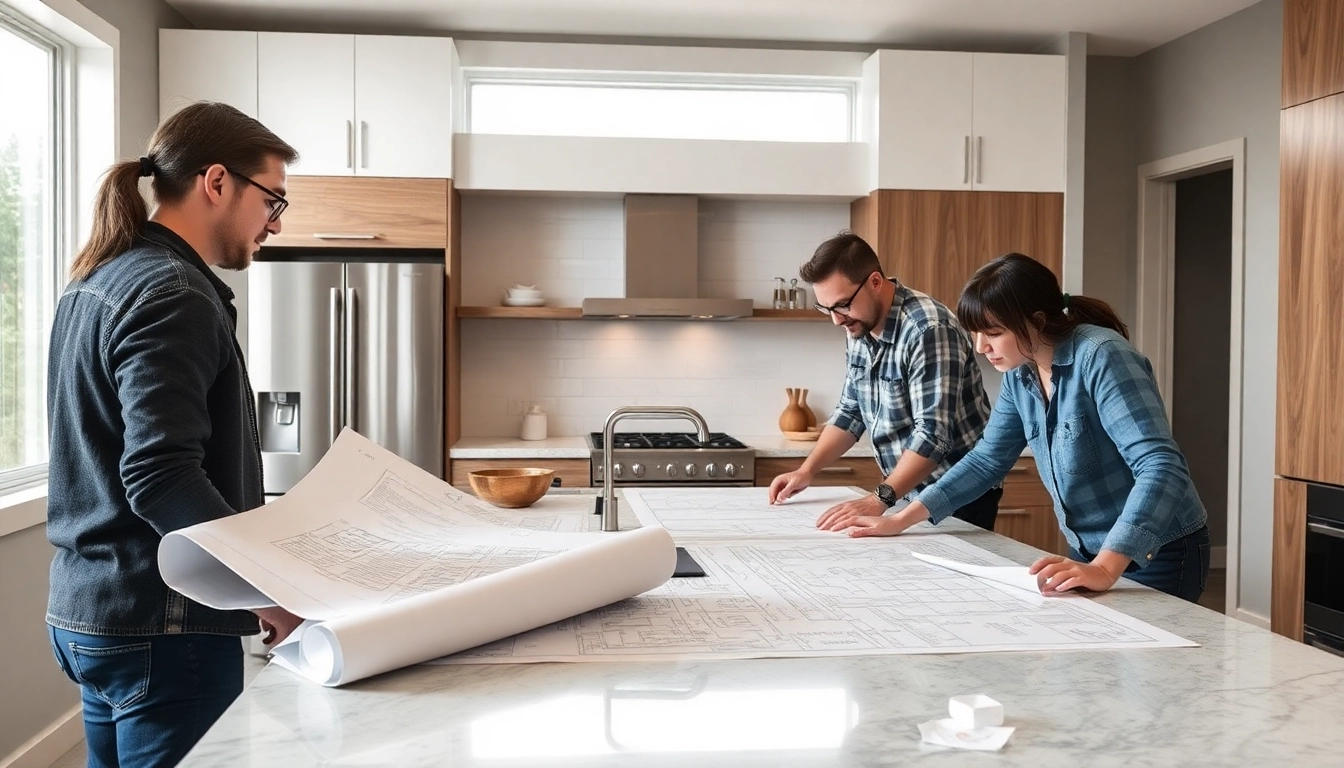Understanding the Role of a Skilled Carpenter
A skilled carpenter is a vital contributor to the construction and renovation industries, transforming raw materials into functional, aesthetic, and durable structures. Whether working on residential homes, commercial buildings, or specialized projects, carpenters play a crucial role in bringing architectural visions to life. For anyone looking to undertake a building or remodeling project, understanding what a Carpenter does, their skill set, and the essentials behind their craft is invaluable. Carpentry is not merely about cutting and assembling wood; it involves precise planning, technical knowledge, safety awareness, and an eye for detail, ensuring that every project meets high standards of quality and safety.
What Does a Carpenter Do? Key Responsibilities and Skills
Carpenters construct, repair, and install building frameworks and structures made from wood, metal, and other materials. Their responsibilities include cutting, shaping, and assembling materials into structures such as walls, floors, roofs, staircases, and custom cabinetry. According to the Occupational Outlook Handbook, the core tasks revolve around constructing, repairing, and installing frameworks and structures, highlighting the importance of precision and craftsmanship in their role. They often collaborate with architects, contractors, and clients to ensure the project aligns with design specifications, safety standards, and functional needs.
Beyond physical construction, carpenters must possess a comprehensive toolkit of skills: reading blueprints, mathematical proficiency for measurements, understanding building codes, and safety protocols. Their technical expertise ensures that structures are not only functional but also compliant with regulatory standards. Proficiency in using hand tools like saws, chisels, and hammers, along with power tools such as drills, sanders, and nail guns, is essential. Furthermore, modern carpenters increasingly employ digital tools, including CAD software, to facilitate precise planning.
Different Types of Carpenters and Their Specializations
Carpentry is a broad trade with various specializations, each requiring distinct skills and expertise. Understanding these categories helps homeowners and project managers select the right professional for specific tasks.
Rough Carpentry
Focused on the structural framework of buildings, rough carpenters construct the skeleton—walls, floors, roofs, and foundational elements—that support the entire structure. They work on building’s “skeleton,” often in the early stages of construction, using durable and heavy-duty materials aligned with engineering specifications.
Finish Carpentry
Finish carpenters add the detailed work that makes a space visually appealing and functional. This includes installing trim, molding, cabinetry, doors, and window casings. Their work demands high precision and attention to detail, as it directly influences the aesthetics of the finished project.
Residential Carpentry
Specializing in homes and smaller-scale structures, residential carpenters focus on tasks such as framing, installing cabinets, wood flooring, and decks. They often work directly with homeowners or remodeling contractors.
Commercial Carpentry
Working on large-scale projects like office buildings, malls, and institutional facilities, commercial carpenters handle complex frameworks, partitions, and structural components that require adherence to strict building codes and deadlines.
Industrial Carpentry
In industrial settings, carpenters construct and maintain infrastructure such as factories, power plants, and manufacturing facilities, often involving specialized materials like heavy-duty steel and concrete forms.
Other Specializations
Additional areas include cabinetry, roofing, siding, and decorative woodwork. Each specialization demands specific techniques, tools, and knowledge bases, making carpenters valuable versatile tradespeople.
Essential Tools and Materials Every Carpenter Uses
The effectiveness of a carpenter hinges on their tools and materials—an array that has evolved from simple hand tools to sophisticated power equipment. Mastery over these tools ensures efficiency, safety, and high-quality results.
- Measuring and Marking Tools: Tape measures, combination squares, chalk lines, and levels are fundamental for precision.
- Cutting Tools: Hand saws, circular saws, jigsaws, and miter saws enable accurate cuts in wood and other materials.
- Framing and Assembly Tools: Hammer, nail guns, clamps, screwdrivers, and wrenches facilitate assembly and fastening.
- Power Tools: Drill presses, routers, sanders, and pneumatic tools speed up the work process and improve consistency.
- Safety Equipment: Helmets, goggles, dust masks, gloves, and ear protection are essential to maintain safety on the job site.
Materials range from standard framing lumber and plywood to specialty woods like oak or maple, along with metals, plastics, and composites used for specific applications. Knowledge of material properties allows a carpenter to select the right material for durability and aesthetic purposes.
Choosing the Right Carpenter for Your Project
Factors to Consider When Hiring a Carpenter
Selecting a qualified carpenter involves assessing several key factors:
- Experience and Specialization: Ensure the carpenter has experience relevant to your project’s scope, whether it’s framing, cabinetry, or finishing work.
- Licensing and Insurance: Verify that the professional holds appropriate licenses and insurance policies, which protect against liability and accidents.
- Reputation and References: Seek out reviews, testimonials, or personal references to gauge reliability and craftsmanship quality.
- Portfolio of Past Work: Request examples or photos of completed projects similar to yours.
- Cost and Payment Terms: Obtain detailed estimates and clarify payment schedules to avoid surprises.
Questions to Ask During the Selection Process
Effective questions can illuminate a candidate’s competency and professionalism:
- How many years of experience do you have with this type of project?
- Can you provide references or testimonials?
- Are you licensed and insured?
- What is your project timeline?
- How do you handle unforeseen issues or delays?
How to Verify a Carpenter’s Experience and Credentials
Verify licensing by checking local or state licensing boards. Request copies of insurance documents and certificates for workers’ compensation and liability. Review their portfolio, and if possible, visit a current job site or completed project to assess craftsmanship firsthand.
Carpentry Techniques and Best Practices
Fundamental Carpentry Methods for Beginners
Beginners should master core skills like accurate measuring, safe tool handling, and basic joinery techniques, such as dovetail, dado, and butt joints. Emphasizing safety, patience, and attention to detail helps establish a strong foundation.
Learning to read blueprints and understanding construction symbols are essential early steps, as they ensure craftsmanship aligns with design specifications.
Advanced Techniques for Professional Results
Experienced carpenters employ complex skills such as custom cabinetry making, framing intricate structures, and implementing advanced finishing processes. Techniques like shimming, fine sanding, and detailed molding require both skill and experience to achieve seamless results.
Incorporating modern tools like CNC routers or digital measurement systems enhances precision, especially for custom or high-end projects.
Ensuring Safety and Quality in Every Finish
Adherence to safety standards—wearing appropriate personal protective equipment, following OSHA guidelines, and maintaining clean workspaces—reduces accidents. Quality control involves regular inspection, proper material handling, and a focus on detail to ensure the longevity and aesthetic appeal of the finished product.
Cost, Pricing, and Budgeting for Carpentry Projects
Average Costs and Hourly Rates for Carpenters
The typical hourly rate for a carpenter varies between $75 and $125, depending on experience, specialization, and location. The national average hovers around $85-$100. Smaller projects or less experienced workers may charge less, while complex or custom work often commands higher rates. For comprehensive projects, contractors may offer fixed quotes based on the scope of work.
Tips for Budgeting and Saving on Carpentry Work
To optimize your budget:
- Get multiple quotes from reputable carpenters.
- Plan the project thoroughly to avoid scope creep.
- Use standard materials when possible to reduce costs.
- Schedule work during off-peak seasons when rates might be lower.
- Consider combining tasks or doing some prep work yourself, if feasible.
Understanding Quotes and Service Fees
When reviewing quotes, ensure clarity on labor costs, material charges, permits, and cleanup fees. An itemized estimate helps prevent misunderstandings. Always confirm timelines and payment conditions upfront to facilitate smooth project progression.
Related Careers and Opportunities in Carpentry
How to Start a Career as a Carpenter
Starting in carpentry involves gaining foundational skills through vocational schools, apprenticeships, or on-the-job training. Many successful carpenters learn through a combination of formal education and hands-on experience under seasoned professionals.
Training, Certification, and Educational Resources
Accredited programs offered by vocational colleges provide technical skills and safety training. Certifications such as the OSHA Construction Safety and Health Certification enhance job prospects. Online tutorials, community college courses, and apprenticeship programs serve as valuable resources.
Advancement and Specialization Opportunities in Woodworking
Experienced carpenters can specialize further—becoming master carpenters, project managers, or starting their own construction businesses. Specializations like custom cabinetry or historic restoration can command higher fees and recognition.













